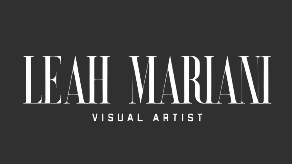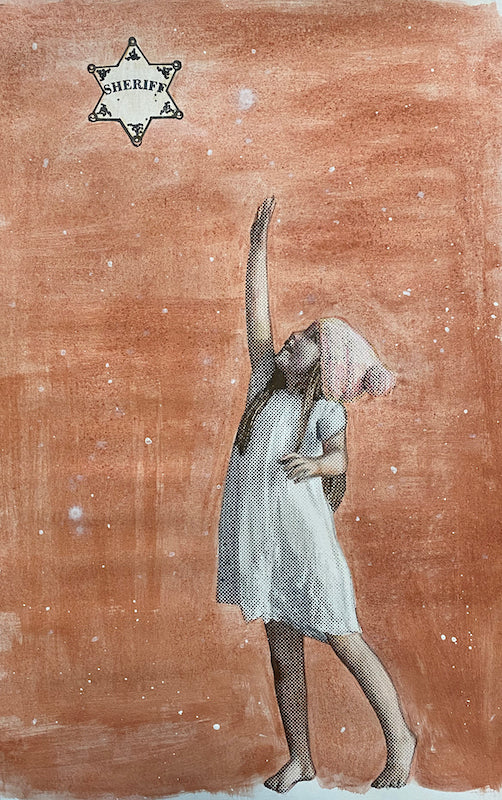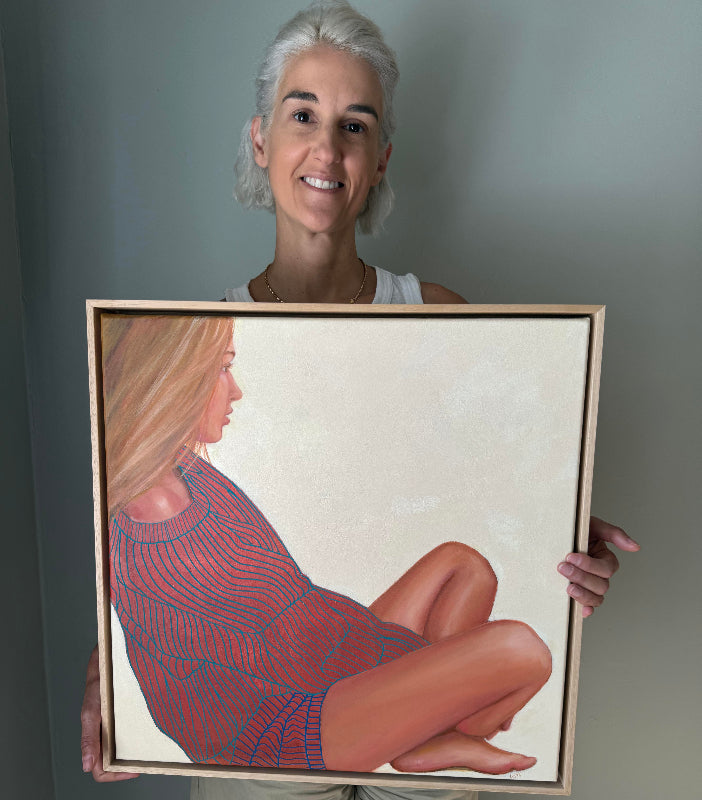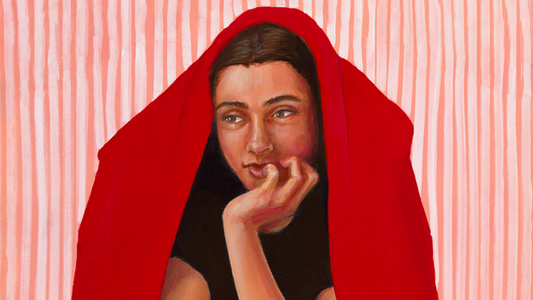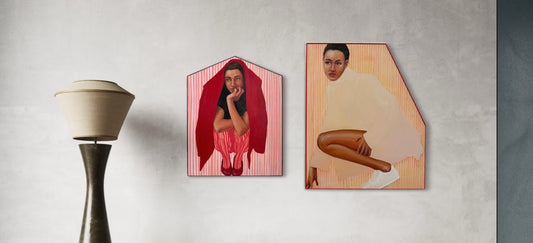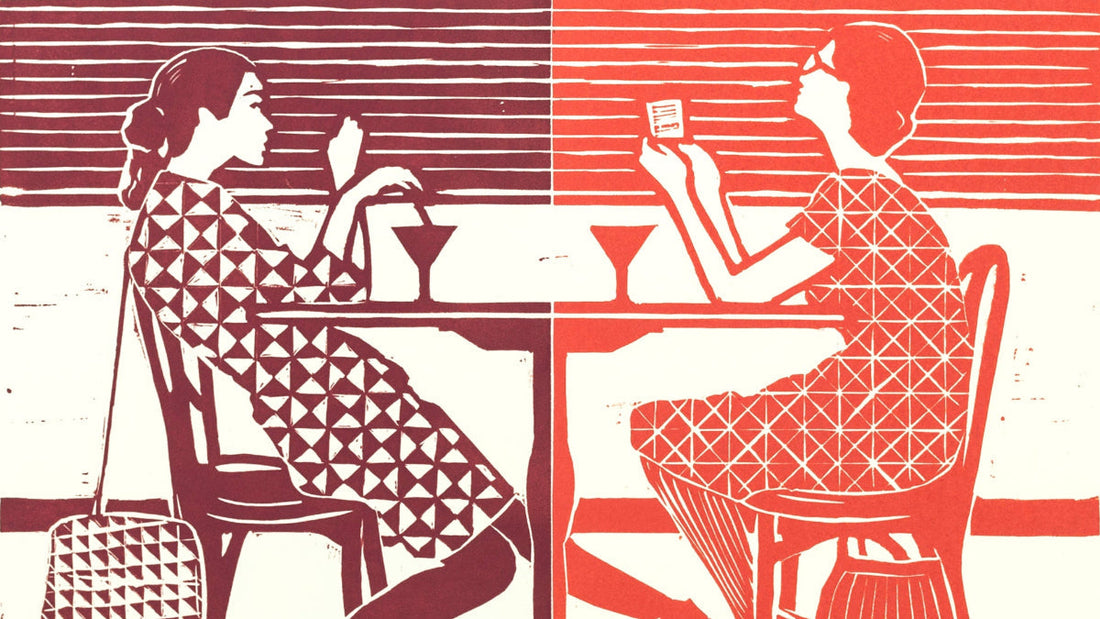
Art Collecting: Art Prints Explained
Investing in artist prints is an affordable way to expand your art collection. However, there are many different types of prints and there is a multitude of technical terms. Have you ever wondered what the difference is between a giclée and a lino print? Or a limited edition print versus an open edition? Well, wonder no more; here are the answers to all your fine art print-related questions in this printmaking glossary in alphabetical order.
Aquatint
An aquatint is a type of etching in which a porous ground coats a metal plate before it is immersed in acid, allowing an even or gradual biting (erosion) of the plate. The resulting image has a grainy and textural effect, unlike a hard-edged line.
Archival
When referring to materials, archival means something suitable for long-term conservation. Archival paper means that it is an acid-free, fiber-based paper that may also be buffered. Archival pigment inks are light-fast inks, which, if kept out of the sun, will remain true for up to 25 years.
Artist’s proof
The artist’s proof (AP) typically refers to the first print pulled by the artist, taken to see the current state of the plate during the production process. It’s similar to a test print. An artist may also produce a limited number of artist’s proofs that are identical to the standard edition. Fractions may be used to indicate the total number of proofs. For example, a piece marked A/P 1/4 means that it is the first artist proof out of 4 that were produced.
Collagraph
Collagraphy is a versatile printing process in which a textured plate is inked up and put through a press. Different textures hold varying amounts of ink and print different tones and textures. Anything with a low-relief texture can be stuck down and used: wallpaper, leaves, fabrics, doilies, tapes and threads etc. The collagraph plate is then varnished, inked up, and put through the printing press, creating a reverse print.
Cotton rag
This refers to paper made from cotton. It is a good quality, acid-free, long-fiber paper that is considered archival. Not all archival papers are made from cotton.
Drypoint
Drypoint is a printmaking technique in which an image is incised into a plate with a hard-pointed needle, made of sharp metal or diamond. Traditionally, the plate used was copper, but now acetate or plexiglas (clear plastic) is commonly used. The image is scratched into the surface with a metal tool creating burrs which hold the ink. A larger burr will hold a lot of ink, producing a characteristically soft, dense line that differentiates drypoint from other intaglio methods, such as etching which produces a smooth, hard-edged line. The incised plate is printed in reverse using a printing press. The pressure of printing quickly destroys the burr, which means that drypoint is useful only for comparatively small editions, as few as ten or twenty impressions.
Product image: Reach for the Stars print by Leah Mariani
Etching
Etching is a method of printmaking in which a design is incised by acid into a metal plate. The metal plate is covered in a protective layer, called the ground, which is scraped away using tools to expose the metal plate. The metal plate is then placed in nitric acid and the exposed areas are eaten away by the acid. The plate is cleaned and the eroded areas hold the ink and create the final design as it is pressed into paper. The plate may be placed into the acid several times to create varying gradients of darkness. The image is then printed in reverse, on damp paper and an indentation, known as the ‘plate mark’, is left by the plate’s outer edges against the paper. Typically, hundreds of impressions (copies) could be printed before the metal plate shows signs of wear.
Intaglio
Intaglio is the family of printing and printmaking techniques in which the image is incised into a surface, and the line or sunken area holds the ink. It includes drypoint, aquatint, etching and engraving. This is the opposite of linocut printing, where the raised areas hold the ink.
Limited edition
Limited edition prints mean that only a certain number of prints are available. These prints are created by the artist and are signed and numbered. As they are limited in number, they are considered more valuable than open-edition prints. While not as valuable as the original artwork, numbered editions have a high value because they are authorised and often signed by the artist, and after the exact number has been sold, they will not be recreated again as a limited edition. A limited edition could be a set of prints, photographs or sculptures made from a single image off one plate, negative, or mold and numbered consecutively. Fractions are used to indicate the total number of prints. For example, a piece marked 20/100 is the 20th printout of 100 prints that were produced. Sometimes editions may vary in size, i.e, prints from the same edition may be printed in different sizes.
Linocut print
A linocut print is a type of relief printmaking where an image is carved into a block of linoleum, and then ink is applied to the raised surface and transferred to paper. It's similar to woodcut printing but uses linoleum, a softer material, allowing for more intricate and detailed designs.
Product image: Cocktail Hour linocut print by Leah Mariani
Open edition
When an artist sells open-edition prints, there’s no predetermined limit on how many prints will be offered. With open editions, the number of prints that can be created and sold is unlimited. These may or may not be signed by the artist.
Giclée print
A giclée is a type of digital fine-art print most commonly used for reproductions, meaning a multiple print or exact copy of an original work of art that was created by conventional means (painting, drawing, etc.) and then reproduced digitally, via inkjet printing. While giclée printing is a type of inkjet printing, not all inkjet prints are giclée prints. Giclée printing produces a higher quality product, with a longer lifespan than a standard desktop inkjet printer. It means the inks are stable, pigment-based inks, not dyes. Giclée prints are also called ‘pigment ink print on archival paper,’ or ‘pigment ink on cotton rag.' Giclee prints are often cheaper than hand-made prints.
Product Image: Free Your Mind giclee print by Leah Mariani
Screen print
Screen printing, also known as silkscreen, is an ancient printing technique that was popularised by Andy Warhol. A stencil is placed in a frame, which has a layer of fine mesh stretched across it, forming a ‘screen’. A sheet of paper is placed below the screen, and ink is pushed through the stencil from above, using a rubber blade or squeegee. In addition to stencils, a photographic image can be reproduced on the screen using light-sensitive gelatines. Screen prints produce a visible, albeit sometimes very minimal, dot screen pattern. Multi-coloured prints generally require multiple layers of printing.
Photographic print
Photographic print is a broad term and historically referred to chemistry-based prints such as those produced via traditional darkroom practices. Nowadays, photographic prints can be produced with machines like the Pegasus, Lightjet and Lambda machines. Photographic prints are also called 'C-type' prints (C for Chemistry).
Printing press
The printing press is a device that allows for the mass production of uniform printed matter. Typically, a printing press employed by an artist uses a roller to apply pressure to an inked surface (or plate) resting upon the paper (or fabric), thereby transferring the image.
Works on paper
Works on paper include all artworks created on paper using a variety of media. It is a very broad term that embraces all kinds of printmaking techniques, as well as watercolours, collages, and drawings with pencil, charcoal, pastel etc. The common denominator is that the works use paper as a substrate.
